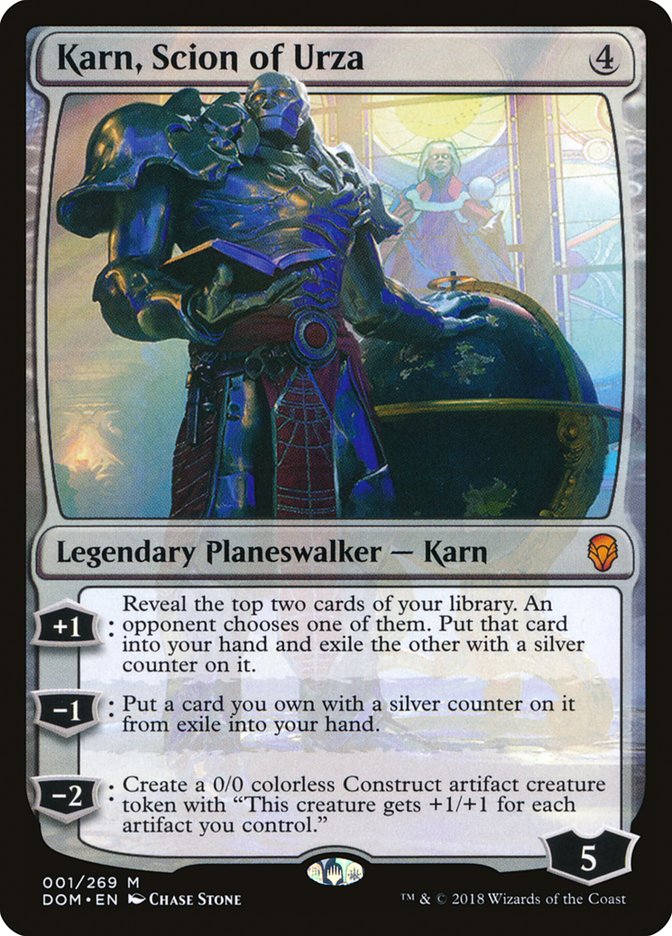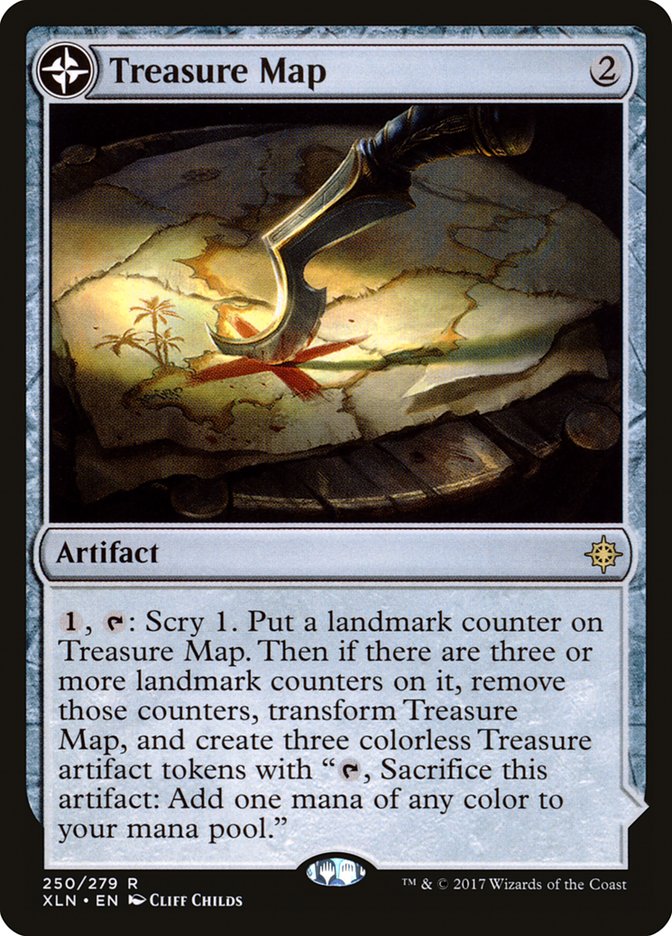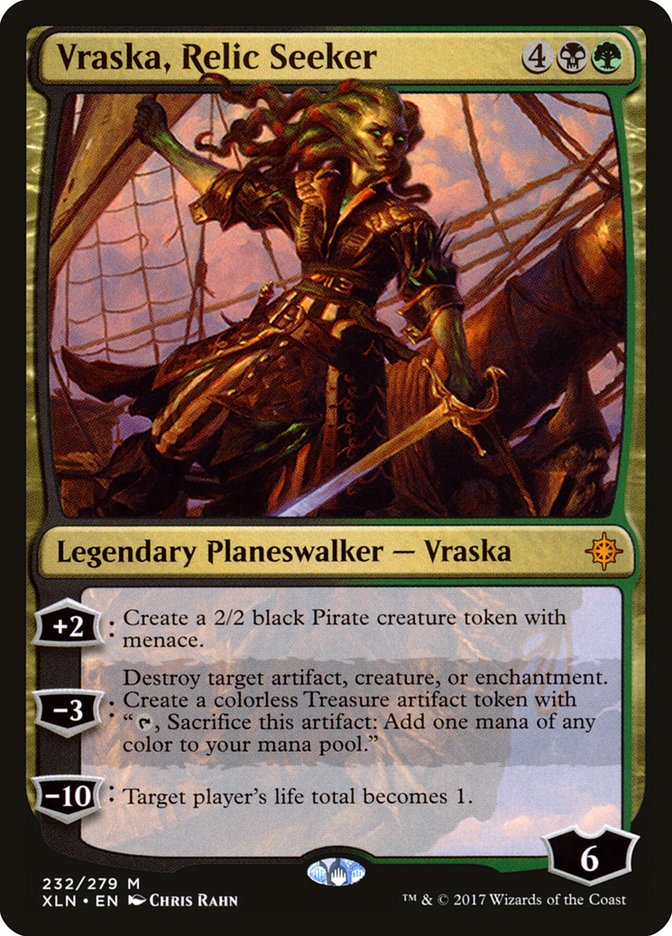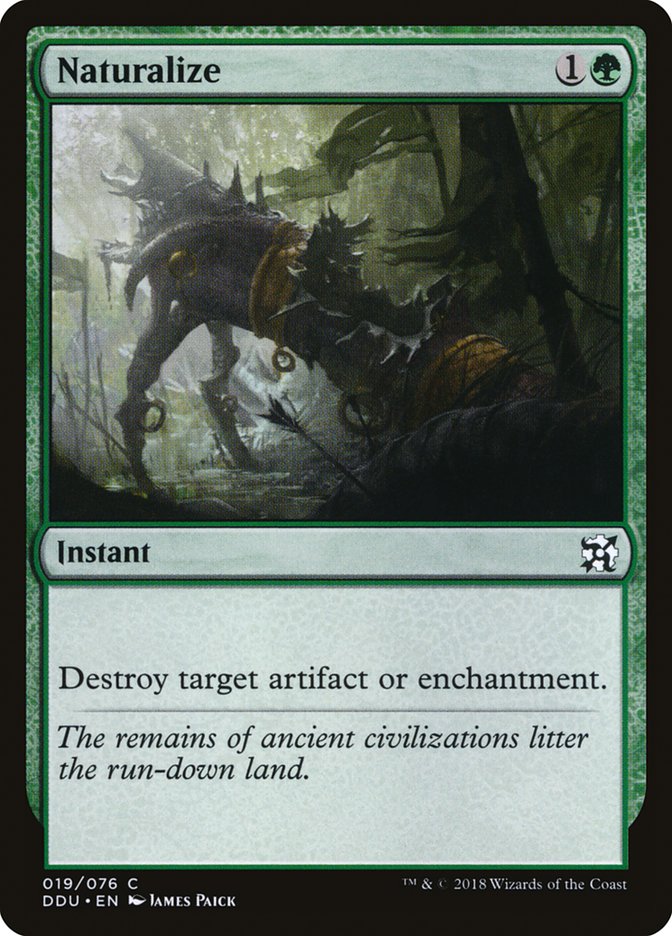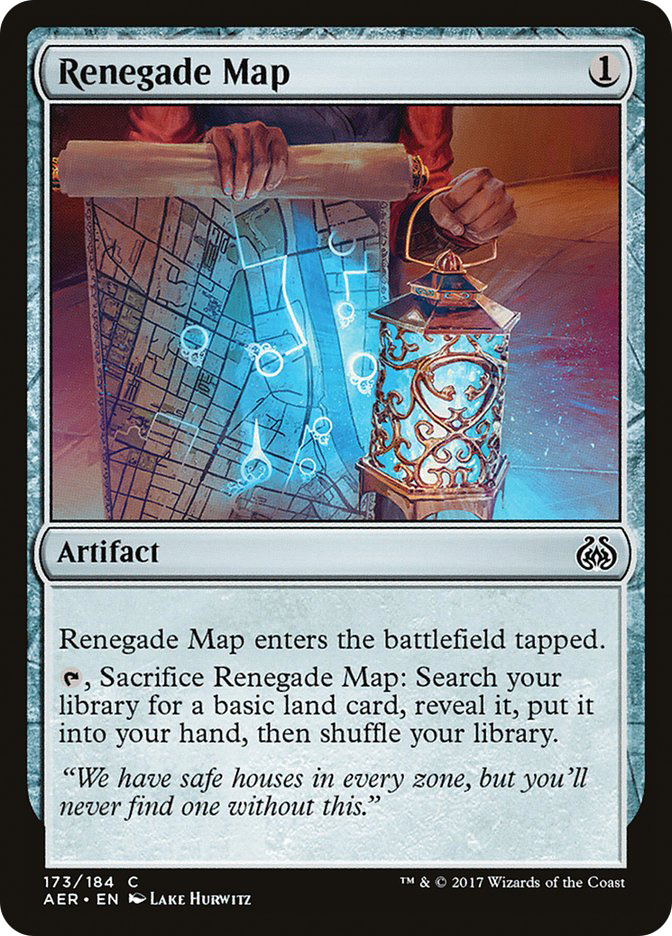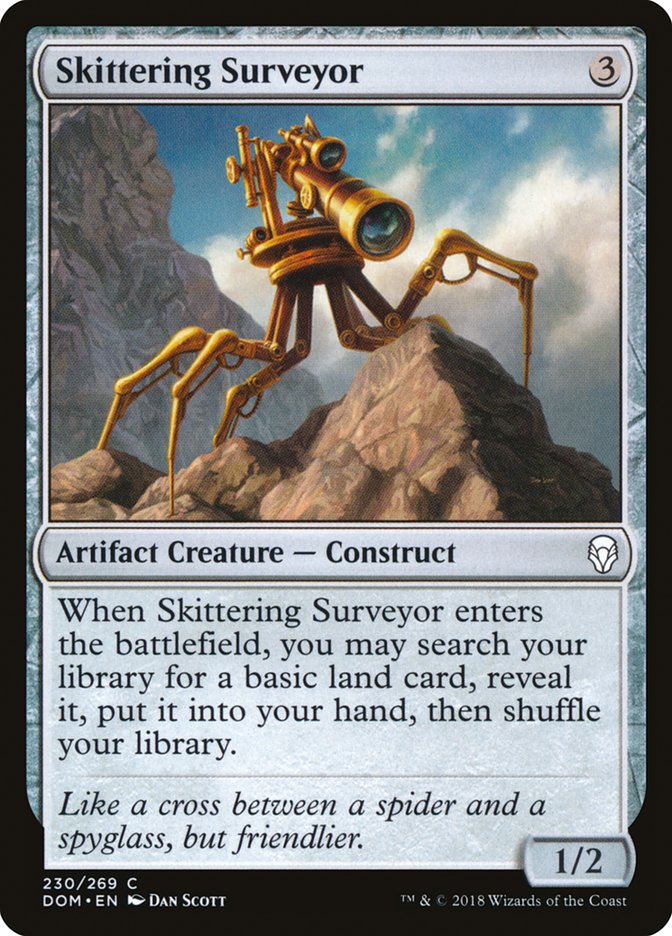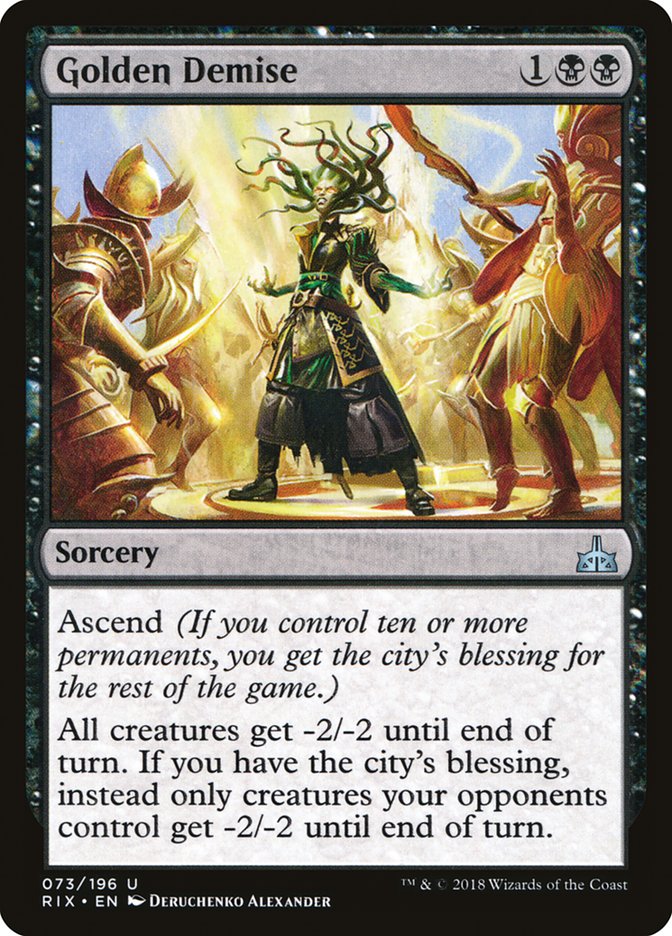This past weekend marked the release of Dominaria in the three
biggest Constructed formats, with #SCGATL being Standard,
Modern, and Legacy. I was in the Standard seat for the first time in a Team
Constructed Open, with Daryl Ayers playing Modern and Jody Keith playing
Legacy. We ended up finishing 11-4 over the weekend, good enough for tenth
place.
Going into the tournament we knew Daryl was going to be playing his
favorite deck, Amulet Titan, while Jody Keith was going to be killing his
opponent with Marit Lage. I had a lot of work to do, however, as I was
playing the format that was going to be changed the most by the
introduction of Magic’s newest set. I knew I wanted to play a midrange or
control deck, as those are the ones that I believe maximize my specific
play style, and as soon as Dominaria was released on Magic Online
it was time to start brewing.
Creatures (11)
Planeswalkers (6)
Lands (23)
Spells (20)
Sideboard

Fellow StarCityGames.com columnist Brad Nelson has made a career in the
last few years of playing midrange decks in Standard that are built to beat
aggro decks in the main deck while having a sideboard that win Games 2 and
3 against control decks, and that’s the exact angle I went for this past
weekend. In fact, I believe that this deck’s greatest strength is the
sideboard and the ability to adapt to the many linear decks in Standard.
There are many different aggro decks right now, but you can attack them all
in basically the same way, unlike a format like Modern which has various
aggressive decks like Humans, Burn, Affinity, and B/R Hollow One where you
need to have different answers for all of them. I would even call U/W
Control a linear deck in that it does roughly the same thing every game,
even after sideboard, and is therefore, easily exploitable. I wanted to
build a deck that had a variety of angles of attack and interaction and one
that I could tailor my sideboard configuration to match up well against my
opponent.
With this in mind, one of the first builds I tried was a Sultai Midrange
deck built around playing more artifacts than normal to try and maximize
the effectiveness of Karn, Scion of Urza’s minus ability. I particularly
wanted to have access to the trio of Duress, Negate, and Naturalize in my
75 as I believe they are three of the best interaction spells in the
format. It started off incredibly well, and I was able to 5-0 the very
first league I streamed with the deck. It fit my play style well, so I kept
playing it through some more leagues and continued to learn about the
strengths and weaknesses of the deck in the new format.
The biggest takeaway I had at the time was that Karn, Scion of Urza was in
fact as good as advertised. The card advantage it provided was exactly what
my deck wanted to be doing. Even though the plus ability will only net you
the worst of the two cards on the top of your library, which is most of the
time a land, being able to hit your land drops in a midrange deck,
especially with The Scarab God, is crucial. I also often times would find
myself digging for Vraska’s Contempt to deal with whatever problematic
permanent my opponents would have, and Karn’s plus ability was close to a
Divination each time to try and find it. Karn also came with a relatively
quick clock when I wanted to use the minus two ability to make tokens and
get aggressive, making it an incredibly impressive card overall.
I also quickly realized that Treasure Map was an incredibly good card, and
I wished I could play more than four. Even considering how good Karn was,
Treasure Map was the best card in the deck. I almost always prioritized
using a mana to get a counter on Treasure Map every turn over curving out,
because Treasure Map transforming is a huge mana and card advantage boost.
Also, just having access to the Treasure tokens would often times make the
Construct token Karn made into a formidable threat, and I imagine I will be
continuing to play plenty of Treasure Maps with different Karn decks in the
future.
Walking Ballista is simply the best creature in Standard right now, and
it’s no different for this deck. Between plenty of small creatures to pick
off, like Llanowar Elves and Toolcraft Exemplar, as well as being an
amazing draw late, it’s always easy to find something to do with your
Walking Ballista. I even particularly like it to finish off a Teferi, Hero
of Dominaria that just entered the battlefield and tucked something away,
leaving itself with one loyalty counter. If you’re playing anything but a
dedicated control deck, then you probably want to be playing some number of
Walking Ballistas.
When playing U/B Control earlier in the year I lamented how difficult it
was to destroy artifacts and enchantments, something that I knew was going
to be vital for Dominaria Standard. Therefore, I knew right away I
wanted to splash green to be able to take care of this, and Vraska, Relic
Seeker was perfect for the deck. Vraska’s minus ability creates a Treasure
token, which allows Contraband Kingpin to scry one, can grow your Construct
token from Karn, or can be sacrificed to Treasure Cove. Also, the ultimate
ability of putting the opponent down to one life is incredibly convenient
when playing four copies of Walking Ballista. As far as the sideboard, I
opted for the instant speed of Naturalize over Broken Bond, valuing the
ability to destroy a God-Pharaoh’s Gift or Cast Out on my opponents’ turn
over the extra land drop.
Unfortunately, the more I tried out the extra artifacts that I was playing
to help Karn’s minus two ability I realized they simply weren’t cutting it.
There would be too many turns where I needed to tap out to play my spells
and wouldn’t have an extra mana to deploy a Renegade Map, even though I
didn’t have more land drops to make, and therefore, even a tapped land
would have been a big improvement. I was also seeing the shuffle ability as
a negative many times as I was scrying so much with Treasure Map and
Contraband Kingpin and wanted to keep the cards I sent to the bottom where
they were. The same went for Skittering Surveyor, and unfortunately the 1/2
body wasn’t impactful enough for a three-drop.
So I was very satisfied with the initial deck list but it needed a little
bit of fine tuning. I kept at it, working all week on the deck and ended up
with this 75 as a finished product for #SCGATL, where I
finished 11-3-1 individually.
As you notice there really aren’t too many changes at all as I simply
updated the deck with more reliable cards. Instead of the Renegade Maps I
played two Botanical Sanctums and a Blooming Marsh, since even though they
would enter the battlefield tapped in the late game it was better than
having to spend the mana on it. The biggest change I made was adding a
sweeper to the main deck.
We all know that week one Standard formats tend to be aggressive, but this
one felt even more so in particular with Mono-Red Aggro, R/B Aggro, and
Mardu Vehicles being everywhere both on Magic Online leading up to #SCGATL and at the Open
as well. The Thursday before #SCGATL, which was my
last day of testing, was filled with aggro deck after aggro deck, and I was
struggling to keep up. This is when I decided to add in the fourth
Contraband Kingpin into the main deck as well as a second Golden Demise,
which I thought was incredibly important due to the prevalence of History
of Benalia, a card I was really struggling against. In the Open I didn’t
end up seeing many copies of History of Benalia, but seven out of nine
rounds Day One were against red aggressive decks, and I was rewarded over
and over again for having the low-costed sweeper in the main deck.
Sideboard Guide
Most of these sideboard plans are a little rough as the exact
configurations of the decklists your opponents will play varies greatly.
Therefore, I sideboarded slightly differently almost every round of the
tournament, based on what cards I saw from the opponent games 1 and 2, and
what I was expecting them to have after sideboard. I’ll be writing what I
believe would be the most common sideboarding practice for each common
matchup, as well as some cards to watch out for that could change it.
VS Mono-Red Aggro and R/B Aggro
Out:

In:

There isn’t much sideboarding to do in this matchup since the main deck is
already tuned to beat it with the four copies of Contraband Kingpin and two
copies of Golden Demise. I did end up liking to keep a Vraska still in the
deck, as I found that when I cut both, I ended up not having a good enough
top end to turn the corner with. If you’re playing against an opponent that
has more artifacts or enchantments in their deck, such as Heart of Kiran,
Aethersphere Harvester, and Arguel’s Blood Fast, then I like to bring in a
couple Naturalizes as well. Also, if your opponent doesn’t have Goblin
Chainwhirler or Glorybringer, then I’d recommend taking out the Cast Downs
either instead of the Treasure Maps or for the Naturalizes if applicable.
VS U/W Control
Out:

In:

This matchup is very hard to win in game 1, but that completely changes
after sideboarding where we have eleven very good cards for the matchup
coming in. The games to tend to take a long time, and honestly, this
weekend during the two times I played the matchup I didn’t even put up a
fight in the first game, conceding early in the round to ensure having
enough time to play games 2 and 3. I generally try to get Teferi off the
battlefield as soon as possible, whether from Vraska’s Contempt or Walking
Ballista. Naturalize has plenty of targets in the matchup, including
Torrential Gearhulk, which is particularly nice to destroy instead of exile
in order for it to be a target for The Scarab God later. Make sure you
don’t run your Carnage Tyrant into a Settle the Wreckage, and it’s usually
better to not attack until you can find a Duress or a Negate to help pave
the way. Not attacking also keeps four mana from the opponent locked up, as
they must keep Settle the Wreckage up. Even with a poor game 1, this was a
matchup I was actively wanting to play against, as the sideboard games are
incredibly favorable.
VS B/G Constrictor
Out:

In:

This is a really hard match to sideboard for, and also probably the worse
to face overall. The problem is their creatures can get larger than
Contraband Kingpin and Golden Demise in a hurry, and they have plenty of
card advantage and disruption after sideboard. I like having access to at
least one Golden Demise, depending on their build, as it can do a good job
cleaning up Llanowar Elves and explore creatures. The more of those kinds
of creatures they have, the more copies of Golden Demise you can keep in
the deck. I like having Naturalize in this matchup for Arguel’s Blood Fast
and Lifecrafter’s Bestiary, but it also helps against Walking Ballista,
Verdurous Gearhulk, and any vehicles they have. If they’re splashing blue
for Negates or have more planeswalkers than normal, I don’t mind bringing
in Negates. Carnage Tyrant is a respectable blocker that they don’t usually
have much interaction for besides multi-blocking. Besides trimming on more
Treasure Maps, Contraband Kingpin is another card you can trim on if you
don’t think they will be impactful enough after sideboard due to your
opponent not having many small creatures in their deck.
VS Mardu Vehicles and B/W Vehicles
Out:

In:

You want to set up having your Deathgorge Scavenger exile Scrapheap
Scrounger, as you don’t want to use Vraska’s Contempt to get rid of the
card for good. Golden Demise particularly shines against the builds with
History of Benalia and if your opponent doesn’t have them and instead turns
into a control deck after sideboard, you don’t need to have them all in
your deck. In that case I’d recommend playing Duress and Negate instead.
Treasure Map is better against the B/W versions without Abrade and also if
the opponent is trying to be a control deck. Don’t be afraid to use a
Naturalize on a History of Benalia after it makes the first token, as it’s
still worth it to make sure another token and the pump effect don’t happen.
VS U/W Historic
Out:

In:

I treat this matchup mostly as a control mirror after sideboard but some
removal spells are still needed. Fatal Push stays in as a convenient way to
deal with Raff Capashen, Ship’s Mage, and the best way to turn on revolt is
to sacrifice a Treasure to draw a card. Vraska’s Contempt’s main target is
Lyra Dawnbringer, which I try to either use when they tap out to cast her
or during their upkeep if they have the mana available for a counterspell
anyway. Naturalize should have enough targets just like against U/W
Control, with Search for Azcanta, Torrential Gearhulk, and Cast Out leading
the way. This is a deck that you should be able to grind down but the games
will go long and you have to be slightly concerned of not decking yourself.
Overall, I was incredibly happy with the performance of Sultai Midrange
this past weekend and think it’s still in a good spot in the metagame
moving into this weekend. Both the red aggressive matchup and the U/W
Control matchup are favorable for the deck, which is a good place to be
right now in Standard. The worst matchups are the Winding Constrictor decks
as well as the History of Benalia/Karn, Scion of Urza aggressive decks, as
those decks have a wider variety of threats that puts pressure on your
removal to line up well. The same can be said for the Mono-Green deck with
Ghalta, Primal Hunger.
I like the positioning of the black removal spells (Fatal Push and Vraska’s
Contempt) moving into the weekend over the white removal spells (Seal Away
and Cast Out). Everyone knows, or should know, that having Disenchant
effects in their deck is vital, making the latter two somewhat of a
liability, while the former can cleanly answer many threats without worry.
I honestly don’t expect this version of Sultai Midrange to pick up to be a
big part of the metagame, but I think it’s a nice different angle of attack
that most decks aren’t built to deal with right now. After winning #SCGATL I expect U/W
Control to be very popular at #SCGBALT this weekend,
and this deck has all the tools to fight it after sideboard. If you like to
play long games of Magic where you grind out your opponent, give Sultai
Midrange a shot. You may be as pleasantly surprised with the power of the
deck as I have.


